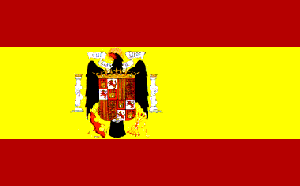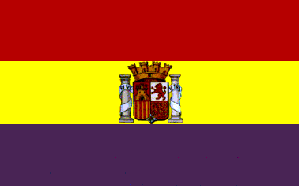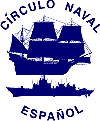Warships of the Spanish Civil War (1936-1939) (original) (raw)
 |
 |
|---|---|
| NATIONALIST FLAG | REPUBLICAN FLAG |
(c) 1997-98 M.P. González López
The autor is menber of the:

 Buques de la Guerra Civil Española
Buques de la Guerra Civil Española
Foreword
Since the fall of General Primo de Rivera's dictatorship (January 1930) and the proclamation of the Republic (14 April 1931), the political and social situation in Spain was degradating day by day: revolts (military or civilian), street disturbances, revolutionary or counter-revolutionary attempts by either factions and so on. The Spanish society was divided into two irreconcilable halves, noone willing to concede to the other. By mid-1936 hardly anybody doubted there was going to be a war, the only question was when it would start. On 17-18 July 1936 a group of generals (among them General Franco) attempted a "coup d'état": the war had started.
The "Armada Espa�ola" 1936-39
| | Nationalits  | Republican
| Republican  | |
| ------------------------------------------------------------- | --------------------------------------------------------- | ------- |
| Battleships | 1 | 1 |
| Heavy Cruisers | (2*) | - |
| Light Cruisers | 1(1*) | 3 |
| Destroyers | 1(4**) | 14(2*) |
| Torpedo boats | 5 | 7 |
| Sloops (rated as Gunboats) | 4(1*) | 1 |
| Minelayers | (3*) | - |
| Coast Guard ships | 4 | 5 |
| Submarines | (2**) | 12 |
| Men | 7000 | 13000 |
| |
| ------------------------------------------------------------- | --------------------------------------------------------- | ------- |
| Battleships | 1 | 1 |
| Heavy Cruisers | (2*) | - |
| Light Cruisers | 1(1*) | 3 |
| Destroyers | 1(4**) | 14(2*) |
| Torpedo boats | 5 | 7 |
| Sloops (rated as Gunboats) | 4(1*) | 1 |
| Minelayers | (3*) | - |
| Coast Guard ships | 4 | 5 |
| Submarines | (2**) | 12 |
| Men | 7000 | 13000 |
* Under construction or in repair in July 1936
** Purchased from Italy in 1937
In July 1936 the Spanish Navy (with the exception of some old vessels such as their battleships), was a quite modern and prepared force. Their warships were well-built and uniformly designed: they were the seventh or eighth navy in the world. Over the Republican years, the Navy was kept at the margin of the political struggle, but in 1936, following the nation's fate, the Navy was also split in two. Most of the ships sided with the Republic. The two heavy cruisers under construction, however, would remain with the Nationalists, and that later proved decisive. The Republicans counted on all of the destroyers except one and all of the submarines. However, the arrest and death of many of their officers and the distrust towards the survivors would lessen their superiority. The Nationalists, on the other hand, tried to compensate for their inferiority by purchasing four aging Italian destroyers (of doubtful usefulness), and make use of the covert action of Italian submarines of the Legionarii class. Though these boats obtained some degree of success (Torricelli torpedoed Miguel de Cervantes), they could never exploit their full potential by evident reasons of International policy.
Spanish sailors were also divided. Most of the officers were on the Nationalist side, the enlisted men on the Republican. Despite a common lack of personnel, the Nationalist Navy was better organized and commanded, and that would translate into a more aggressive attitude. The Republicans improved their training throughout the war, but after their only major success (the sinking of the Baleares), they would never be able to face the enemy as competently. Never in the war there were large engagements (except for the aforementioned action): it was mostly long and hard convoy warfare, shore bombardment, blockade and counter-blockade. The Nationalists had the clearest goals from the start: they better protected their shipping and mostly avoided contact with enemy warships. Anyway, much like on land, both sides fought with equal valor at sea.
The International Participation
The most important international participation was that of the Legionarii class Italian submarines. The Torricelli was one of these boats offering covert support to the Nationalists during the early stages of the war. These subs were manned by Italian crews with only one Spanish liason officer onboard. They operated for four months until February 1937. A grand total of twenty-six vessels were involved, but never more than six at a time. Another submarine campaign was waged later, between August 1937 and February 1938. With less restrictions and without Spanish officers, this time the Italians operated independently, without teaming Nationalist Navy's submarine force. In October 1937 four of these boats were integrated in the Nationalist Navy (with Spanish hull names and Italian crews.) Two more were purchased from Italy and manned by Spanish sailors. Eventually they were all withdrawn in compliance with the_Nyon Agreement_, in February 1938.
Besides that Italy and Germany offered technical and logistical support to the Nationalist Navy. The Soviet Union, on the other hand, supported their Republican counterpart with military advisors, officers and some equipment. The constitution of a "non-intervention" neutral naval force, composed of British and French warships, was a political failure, and caused many incidents.
The naval construction in Spain
Up until the Civil War, naval construction in Spain was monopolized by the "Sociedad Española de Construcción Naval" (SECN - Spanish Corporation of Naval Construction). SECN was largely owned by the British (Vickers-Armstrong), and therefore almost all ships were designed after Royal Navy vessels. It is interesting to note that many British technical advisors continued to work in Spanish shipyards (on both sides) during the war.
WARSHIPS OF THE SPANISH CIVIL WAR
Note about line drawings
These line drawings do not look well on screen. For better results print them. The ideal size is 1/1000 scale;pixels/300= inches or pixels/118.11= cm
Acknowledgments
I wish to acknowledge the cooperation of the directors and staff of theMuseo Naval de Madrid, the Museo Naval de Cartagena,Paolo Pizzi and my sister-in-law Mariaje.



 Bibliography
Bibliography